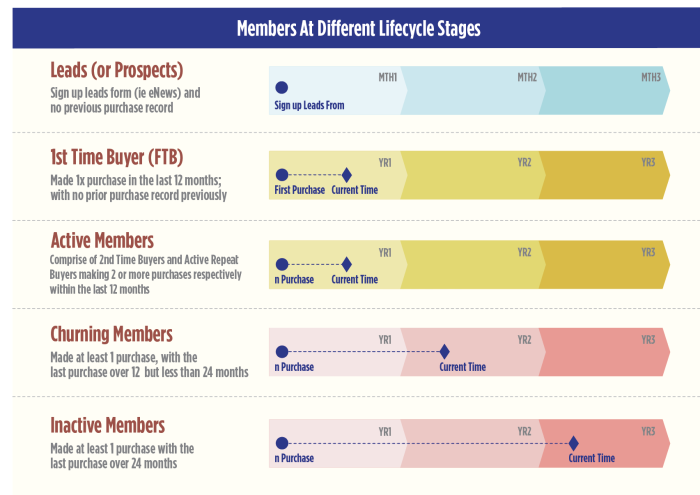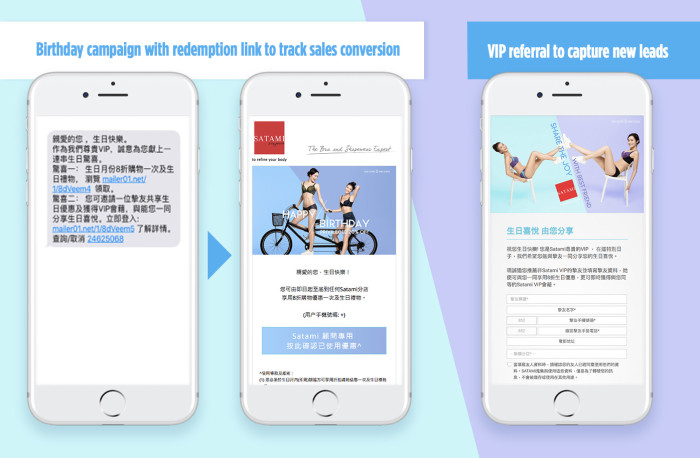
The Master Report: CRM metrics that matter
share on
The industry has come a long way since social media started making waves in the marketing world, and while many maintain – with good reason – that social media is a valuable tool in the box, many have come to realise it’s not the be-all and end-all of modern marketing.
Instead, marketers are starting to look beyond what insiders are calling “vanity metrics” – metrics that make you feel great about your work, but that don’t actually contribute meaningful data about the success (or lack thereof) of a campaign.
Additionally, with the proliferation of e-commerce, an online presence and omnichannel marketing, marketers are swimming in data.
So much data, in fact, that many marketers have no clue where to even begin dissecting and analysing the wealth of information they have hoarded from different touch-points, nor any clue how to consolidate and unify the data.
Ninety-two percent of marketers agree that data management is an integral part of their business, but a staggering 40% of marketers admit to not having the right expertise or know-how to make sense of the data they have, let alone how to automate it, according to the 2017 data-driven marketing report by Jaywing, and only one in five are using advanced attribution models to measure marketing effectiveness.
It’s a classic case of being unable to see the forest through the trees.
This Master Report, in collaboration with XGATE, will dig into how to turn your information into insights; how to turn your data swamp into a gold mine; and how to make your CRM work for you, rather than the other way around.
Marketing ROI: Focus on CRM metrics that matter
Know the different metrics for different objectives
From data to insights and strategies, to how each marketing campaign is accurately tracked to measure business performance, CRM managers struggle to make sense of the data swamp they are in. The key is to define the business objectives and identify the right metrics to tell a story. The first step is to separate vanity metrics from those that help CRM managers make business decisions. For instance, the number of fans, followers, likes, impressions, etc, are useful for understanding brand/product awareness and interactions, but they do not offer data insights to calculate the impact on sales and revenue if your goal is to grow profitability.
At XGATE, we look at five CRM metrics that help marketing managers understand business performance more effectively.
Five key CRM metrics for marketing ROI
Using a life cycle approach, customers (or members) can be segmented into distinct groups – leads, first-time buyers (FTB), active members, churning members and inactive members. There are essentially five sales conversion metrics that will allow CRM managers to effectively measure the success of marketing results.
1. Conversion rate: The first metric in any leads-to-sales campaign will simply be the conversion rate. That is, to measure the number of leads converted into customers (or members) from various channels such as search marketing, website, Facebook, email marketing, mobile marketing, etc.
Once a lead becomes a member, he is tracked as a first-time buyer (FTB). A leads-to-sales conversion rate can be calculated on a 60, 90 or 180-day trailing period basis, but subsequent purchase behavioural metrics may take a longer trailing time frame.
2. Repurchase rate: Once an FTB makes a second transaction within a 12-month period (typical sales cycle for most retail businesses), he would be classified as an active member. The metric to measure this conversion behaviour is called the repurchase rate. This is represented by a member making a second purchase in figure 2.
Meanwhile, it is also possible for this FTB not to buy a second time because he switched brands or was not happy with his first shopping experience. In this case, he would be classified as churning and inactive member after 12 and 24 months of no purchase activity respectively.
3. Retention rate: For CRM managers, the most important metric for reporting is the retention rate because it shows how loyal your members are. This metric is derived from calculating active members with two or more previous transactional records of making purchases. An important factor in this measurement is recency of the last transaction.
4. Reactivation rate: This metric allows CRM managers to understand how successful a retention programme is at re-engaging its members. A churning member is defined as an existing member with a past purchase history, but has recently left a brand.
His last purchase record is typically over 12 months, but less than 24 months. When this churning member makes a purchase due to some promotional offers or campaign activity, his status changes back to active member and his purchase will be counted into the reactivation rate (as shown in figure 2).
5. Win-back rate: A metric relatively similar to reactivation rate is the win-back rate. When a churning member continues to show no purchase activity after 24 months, he automatically becomes an inactive member. Due to the last purchase record having been over 24 months, the performance for win-back rate is usually not high. However, if an inactive member (shown in figure 2) makes a purchase, his status will change to active member. Hence, his transaction is recorded as a win-back sale.
How to improve your CRM metrics performance
Beyond looking at the CRM metrics from leads or repeat sales conversion rates, the absolute number of conversions are of equal importance in providing insights. CRM managers need to look at the health state of their member base growth. Knowing your member base is growing slower than the churn numbers over time alerts you to come up with marketing tactics to improve leads conversions, address “leaky buckets” or conduct survey campaigns to understand the churn reasons.
As a digital marketing practice matures with better BI and data analytics, identifying the right CRM metrics and understanding customer value at various stages of the customer life cycle are essential for good business decisions.
Combining these metrics with predictive analytics and marketing automation, the data intelligence derived can be remarkable.
Stop being confused by big data; take clear steps to translate your data swamp into CRM metrics that effectively drive your marketing efforts to achieve business profitability.
Case study
Satami – The bra and shape wear expert
Satami’s digital transformation journey focused on CRM marketing to grow the business.
The brand: Established in 1985, Satami specialises in the design, production and fitting of lingerie and garments with both shaping and body maintenance functions. The brand is a knowledgeable lingerie expert, which aims to provide a perfect fit for women; and bring out the confidence and beauty inside them.
The challenge: As Satami moved from traditional to digital CRM marketing because of the limitations of traditional channels, it needed a more effective way to measure the success of its transformation journey.
Tracking the marketing ROI across digital channels (SEM, display, social, mobile and web) is close to impossible with data sitting in silos. Managing CRM campaigns without proper data insights also made it difficult to respond quickly to market changes and improve sales conversions effectively.
The objective: Satami wanted to leverage existing data to mine for insights that could support its digital transformation plan. It wanted to adopt marketing automation to achieve a flexible approach to communicating with its customers and then use metrics that could track and measure ROI accurately for the investment made in CRM marketing to achieve its business goals.
The solution: XGATE supported Satami’s digital transformation strategy by focusing on specific key success areas:
• Integrate data between both partners to facilitate the ease of file sharing (transactional data, customer profile, business reports, etc.) Then translate that data into actionable business insights for marketing.
• Implement CRM metrics to track and enhance business performance over time across different CRM digital campaigns.
• Use of marketing automation to launch CRM campaigns (leads capture, welcome, birthdays, etc) to enhance marketing efficiency and grow the customer life-time value using XGATE’s 5As life cycle approach.
The results: The CRM metrics allowed Satami to better understand its customer level of loyalty and activity in regards to purchase behaviour. The automated campaigns using a multi-channel approach mean a customer can be targeted with an email, and if she doesn’t respond after five days, she will be reminded with an SMS message for the event or promotion. With CRM metrics being tracked in near real-time, marketing ROI can now be measured accurately. CRM campaigns have seen new leads grow by 7%; while sales conversions from the birthday campaign alone reached a relatively high average rate of 30%.
About XGATE Corporation
XGATE was founded in 2004, and headquartered at the Science Park in Hong Kong. Since then we have expanded our footprint to Macau, Guangzhou, Chengdu, and more recently, to Singapore and Shanghai. We offer a complete range of marketing solutions with our flagship product, Digital Marketing Services (DMS) platform, to deliver multi-channel marketing (mobile, email, social and web) and technology services that integrates marketing automation, CRM, big data analytics and loyalty management in a single environment.
XGATE’s journey in the digital marketing space has been recognised with the Most Valuable Services Awards in Hong Kong, 2017 gold winner and Local Hero for CRM & Loyalty Agency of the Year, and Top 25 APAC Marketing Technology Solutions Providers 2017. These awards recognised XGATE’s achievements in the areas of commitment to innovation, quality of service, devotion to customer satisfaction and constant improvisation.
(Photo courtesy: iStock)
share on
Free newsletter
Get the daily lowdown on Asia's top marketing stories.
We break down the big and messy topics of the day so you're updated on the most important developments in Asia's marketing development – for free.
subscribe now open in new window



